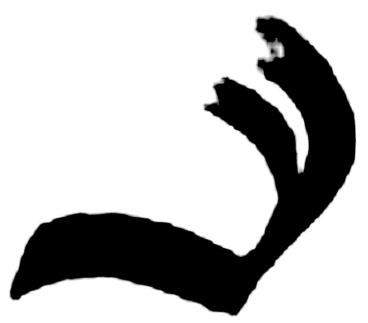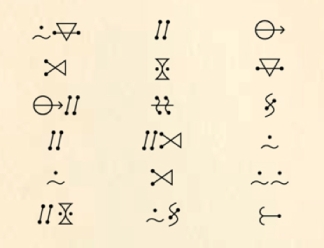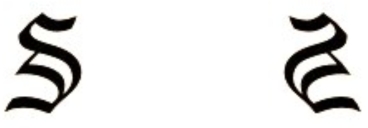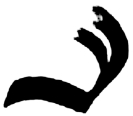Tags
Doug Dorst, Eric Husch, Filomela Caldeira, Follow the Monkey, Jennifer Heyward, JJ Abrams, S, The Glass Bead Game, The Great Synthesis, V.M. Straka, VM Straka
The definition of hell is a place where nothing connects with nothing. – T.S. Eliot
The book of “S.” is about connections. Eric and Jen connect in the margins of a dusty old library book. S. and Sola connect in Ship of Theseus. Filomena Caldeira longs to connect to V.M. Straka in person. We, the readers, are attempting to connect all of the puzzle pieces hidden within the text into a picturesque whole.
Within “S.,” however, we find forces attempting to break those connections. FXC fails to connect with VMS at the San Sebastian Hotel in Havana, Cuba. Vevoda disconnects the Zapadi Three from their community, and continues throughout the story to wield a sword of disconnection in many lives. S. is disconnected from his very self…
More than anything, he wants to see something familiar, something that connects him, however tenuously, to the world he must have known before he lost his memory, his identity, himself. (p46)
In every story, the antagonist has a specific mission. In “S.,” Vevoda’s purpose is ostensibly to grow rich by selling a new kind of weapon and to protect his interests at all costs. But the deeper story here is that Vevoda’s purpose is to sever connections.
Let’s examine some specific scenes in the book that vividly illustrate Vevoda’s ill will in this manor.
We are told in “S.” to follow the monkey. When we first see the monkey, he is connected to the organ grinder by a thin piece of rope “knotted through the organ grinder’s belt loop” (p8). The next time we see him, he is now disconnected from his master and running away from the organ owner’s dim-witted sons “trailing a rope that slaps softly over the street-stones” (p25). This happens as S. is being shanghaied – his first disconnection from Sola – and carried to a ship. His last thought before passing out is Run, monkey. Run.
In The Emersion of “S” (Chapter 3), just after the bomb has gone off on the wharf in B__, S. lies on the ground and appears to experience a flashback (p106-108). After attempting to connect on the wharf there with a girl…
They’re speaking to each other, the boy angling himself toward her, the girl taking a half-step back, keeping distance between them, which surprises S., because isn’t the point of scenes like this that the two people—two bodies, two souls—come together?”
After the failed connection, the boy despondently loads his pockets with weights and prepares to throw himself into the sea.
In Down, and Out (Chapter 5), we see Vevoda’s brown-duster detectives advancing on the fleeing party that includes S., Corbeau, Stenfalk, Ostrero, and Pfeifer. Ostrero and Stenfalk meet their demise at the hands of the detectives, and Pfeifer points out the severed connections that result…
Don’t pretend you don’t see it. She’s gone. It’s what happens. You love, then you lose, then you die. Even if you survive, you die. Think about Ostrero: couldn’t stand to be without his wife and kids. Lost his nerve. And now her. She’s not who she was this morning. Never will be. (p183)
Ostrero, while trying to reconnect with his family, is disconnected from them forever. Corbeau, upon losing her connection to her lover, Stenfalk, will never be the same.
As S., Corbeau, and Pfeifer make their way through the cave to escape the detectives, they come across the painted drawings of the K—. The drawings seem to go in chronological order as they go deeper. The story the drawings tell is one of a unified people with a strong spiritual faith. These drawings of unity and faith grow stronger and richer as the three go deeper until they climax on p184 with this drawing…
On the wall opposite him, S. notices some thing different—a set of symbols that looks like a numbering system. It’s a ledger of some sort, perhaps, fitting into the space between two figures who are both looking at it as if it were a solid thing.
Immediately following this drawing of symbols that seem to connect two people-paintings who stare directly at it, everything changes.
The walls look different now; the lines and colors are as precise as any S. has seen, but the images aren’t as dense. Fewer hands at work, perhaps—fewer people willing to walk this far into the caverns to paint. But the narrative is changing, too; the tribe seems to be splitting into factions. One group of figures is drawn carefully, lithe and graceful; the others look dashed-off, blocky and rough, with much less detail. The two groups now hunt separately. The two groups face off again and again in some sort of tribal meeting. After a while, S. notices another, more subtle difference: the bird-wolf spirits now appear only rarely, and even when they do, they are high above the human action, made small with distance.
The K— become a disconnected people – disconnected from each other and from their once spiritual journey. The paintings thin out beyond this point.
Shortly afterword, Pfeifer’s injury forces him to disconnect from the other two. He remains behind to face the detectives.
The remainder of the chapter brings the connection between S. and Corbeau into sharp focus.
After S. descends through an opening in the floor of the cave, Corbeau slips and falls, landing in his arms. At this precise moment, S. sees that familiar symbol painted on the wall of the cave. They then work together, physically tracing out an S as they navigate an S-curve and arrive at an opening in the cave high above the water.
It is here that they hold hands in a very physical connection. And when they do, Vevoda’s detectives mock this connection with the words That’s so sweet. And then, as S. and Corbeau leap from the cave with hands clasped, they are separated by death as the bullets miss S. but fail to miss Corbeau (p197).
That’s so sweet punctuates the separation that occurs even while the two fugitives remain attached in a fervent grip.
Rewind to p130-131, when S. and Corbeau first hold hands. Jen comments in the margins That’s sweet, punctuating her connection to Eric, who admits leaving an S symbol on the cafe bulletin board to say hi. And these margin notes are written as “Corbeau tightens her grip on his hand.” It is at the precise moment that S. notices his infamous symbol not only once, but twice as a mirror image, etched in a design in the shutters in the home where they have hidden.
Here the two S.’s face each other
Here we have the story of the connection between S. and Corbeau beginning with clasped hands and That’s sweet and S.‘s recognition of two S. symbols in the shutters. And their connection ends with clasped hands, That’s so sweet, and a single S. symbol on the cave wall seen moments before as S. holds Corbeau in his arms.
Throughout “S.,” Vevoda continues to break connections. His business is war – the very definition of global disconnection. And toward the end of the book, as S. himself has chosen this path of violence in retaliation against Vevoda, he sees something very important.
He is riding in a boat on his way to commit the assassination of Nemec, whom we later discover is actually Pfeifer, from the cave. As he does, he notices that Vevoda has destroyed the hills and the ancient symbols etched on their sides in order to harvest the substance of war. And one of those symbols, only partially destroyed, burns its way into S.‘s mind.
The S. itself is broken. Disconnected. Missing a piece of itself. Unrecognizable unless you already know what the whole should look like.
This is the state of S. in this moment. He, too, is broken and disconnected – missing a piece of his very self – symbolized by the death of the magpie as he runs from the palace guards.
S. remains broken and disconnected more than ever during his stay in the Winter City of Chapter 9. Here he is unable to communicate with anyone, even though they are all around him. No one can connect with anyone – it is T.S. Eliot’s very definition of hell.
This is the evil antagonist of “S.” – separation, disconnection, brokenness – hell itself.
The only way to restore what is broken is to find connection. S. must find Sola. He must find himself and return from his own path of violence and disconnection. This must be where the story leads us.
And it does…
If we are to find the underlying clues that lead us to the richest cache of treasure found in the book, we must make connections. It is only then that we may solve the mystery, find ourselves, unite with others, and rediscover the spiritual side of ourselves that we have lost.





p. 46 FN 4, “What if the constellations no longer held?” he asked “Would it not cause one to scrutinize the totality of one’s surroundings carefully? Would it not terrify?” That night sky unites us. It is a shared vision not only around the world right now but a shared vision throughout mankind’s time here. As I said to someone before that he could be confident knowing that he was never alone by looking at the night sky and knowing that I saw the same stars. When the stars do not hold, when that shared vision disintegrates, that is terrifying because connection is lost. And it is terrifying for S/Straka to think, he is all alone…
Looks like a few days before I posted this, you had your own thoughts on disconnection and how the cave paintings emphasize it. Loved your thoughts.
http://ladansedusinge.wordpress.com/2014/02/10/news-and-updates-2112014/
Only a glimmer…
“If only they could see in more than one direction.”
The Captain
Pingback: The Symbols on the Cave Wall | Thoughts On "S"
Pingback: Connections in the Interlude (Tocatta and Fugue in Real Time) | Thoughts On "S"
Pingback: Connections | The Monkey Dance (falling down the S rabbit hole)